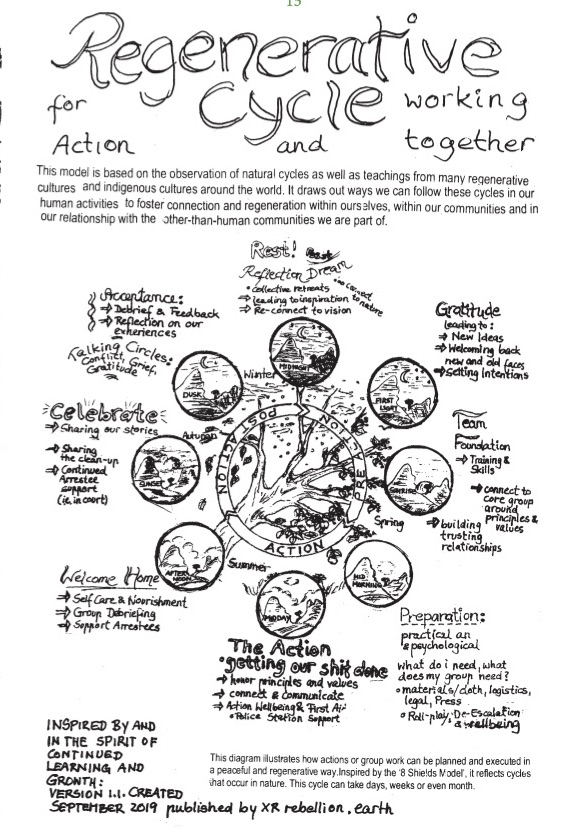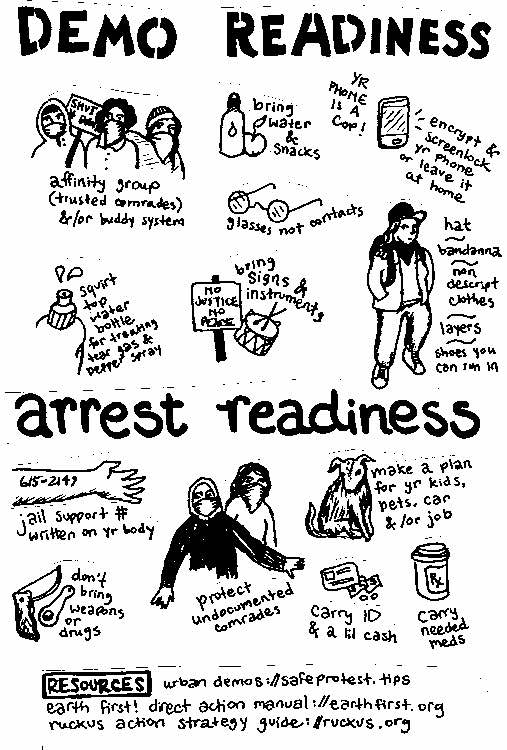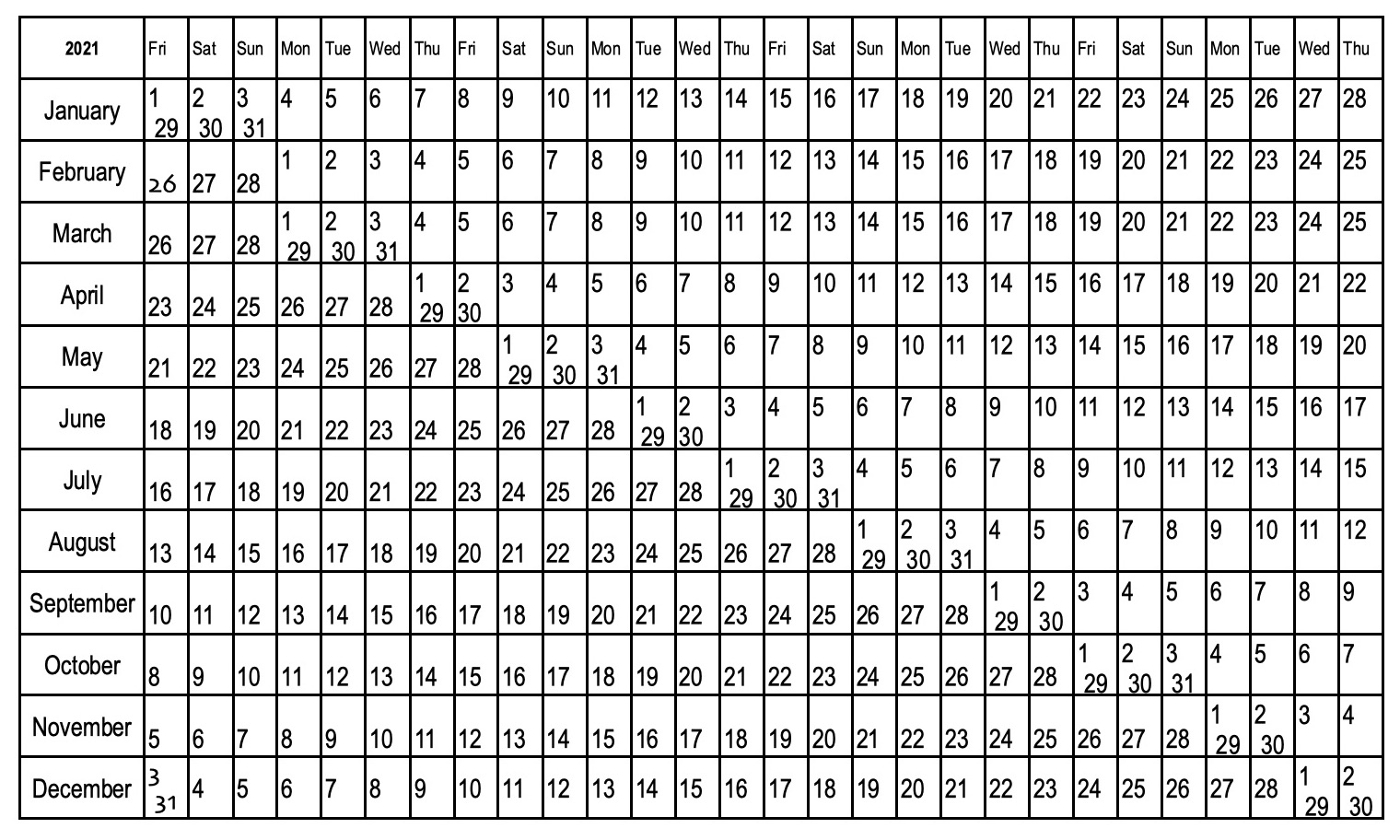You can donate to Long Haul Infoshop by:
(1) Snail mailing checks payable to “Long Haul Infoshop” to 3124 Shattuck Avenue, Berkeley, CA 94705
(2) via paypal. Please write “donate to Long Haul Infoshop” in the memo line.
You can donate to Long Haul Infoshop by:
(1) Snail mailing checks payable to “Long Haul Infoshop” to 3124 Shattuck Avenue, Berkeley, CA 94705
(2) via paypal. Please write “donate to Long Haul Infoshop” in the memo line.

get involved and check out: sociocracyforall.org and or seedsforchange.org.uk/resources
get involved and check out: sociocracyforall.org and or seedsforchange.org.uk/resources


Sometimes it can be hard to know if you’re crazy, or is it the world that’s crazy. Watching while our society destroys itself triggers despair and anxiety. Yet it is possible to summon the courage to stay engaged with the world, survive and fight back. When you’re suffering is often the hardest time to ask for help from others around you — and paradoxically when you need help the most. Feelings exist for reasons — if you repress them too hard, you can miss important lessons they may have for you. While it is impossible to have a list that will apply to everyone’s situation and often situations have to do with class/race/gender, here are some tips you can use when you’re in crisis or to help to care for others:
• Our brains are connected to our bodies so concentrating on physical health can help treat mental distress. Eating healthy food on a regular schedule and getting enough sleep are key. Exercise, dance, biking and physical movement can help. So can fresh air and having a stable, calming place to stay.
• It can help to focus off the crisis and onto what you find joyful until you can gather more resources.
• It is okay to ask for help and it may help to discuss disturbing mental states with others who you trust.
• An important component of mental health is the ability to know ourselves, understand our needs, and be able to talk about them to the other people in our lives. This can be really challenging and can often take guidance from others who have learned how to do it with one another. One tool for creating written documents for communication is called a T-MAP which stands for Transformative Mental Health Practices.
• It can help to have language for mental crisis that feels comfortable and makes more sense than the dominant medical language. Transmission of language often happens in groups.
• Joining a mutual support group of peers listening to and helping peers as equals can be validating, while not necessarily endorsing your feelings. You can form one yourself or join an ongoing group.
• Find a counselor who supports your self-determination. Ask about confidentiality if someone else — such as your parents, boss, or governmental program — is paying for your therapy.
• Drugs and alcohol often make mental health problems worse.
• Psychiatric drugs such as those for depression or bipolar disorder can help some people reduce distress and maintain stability. Other people experience distress and harm from psych drugs and even have trouble withdrawing from them. Figuring out what works for you can be a process because people differ. Check out “Harm Reduction Guide to Coming off Psychiatric Drugs.”
• Keep in mind that some current emotional crises may be caused by traumas from the past, which may need to be emotionally and consciously processed in order not to keep recurring.
• When you’re depressed, it may help to realize that the depressed feeling will eventually pass and your life will begin to seem meaningful again later. Depression inhibits your ability to perceive and understand the world correctly. Depression is often a lack of feelings and a lack of connection to feeling. Your perceptions of loneliness, un-lovability, and hopelessness are not accurate when you are depressed. Avoid making drastic decisions such as hurting yourself when you are unable to correctly perceive reality.
• Distracting yourself from depressed or anxious thoughts can help: listening to music, making art, washing dishes, or doing a project alone or with others.
• Many communities have 24 hour a day crisis hotlines or crisis centers. Call 800-SUICIDE if you’re thinking about killing yourself or 800 646-HOPE to reach a rape crisis line for survivors of sexual violence. Warning: if you call and say you want to kill yourself police may arrive at your door.
• For anxiety, try to remember to breathe. Practicing meditation may also help you relax.
• Acupuncture or massage can be ways for others to give your whole self some gentle attention.
• Ecopsychology is realizing nature and wilderness are our greatest healers. Spend some time outside the city to get centered and get away from pollution which is in itself mind-altering.
• If you have a loved one in crisis, the most helpful thing is to make it clear that you care and be there to listen. They may not be able to call or ask for help — it can be very helpful to keep calling them every day or two to check-in, even if they don’t answer the phone or seem to want help. Sometimes it is okay to want to be alone so don’t be too pushy. Just make it clear that you care. It’s also import to get support and advice for yourself. Caring about someone who is in crisis is in itself a big challenge.
• Social change: Actually address the stressful factors in your environment. Revolution can heal.
• If someone is having delusional thinking or expressing violence related to mental issues, these suggestions may not be enough and it is okay to reach out for professional help.
At a time when the global capitalist system is broken and is failing, regular people create their own structures based on different values, with different heroes, different priorities and using different tools. We offer you this organizer as our humble contribution to that process. Perhaps you’ll fill its pages with marches and assemblies — but we hope also bike rides, compost turns and dance parties. The struggle for liberation requires rage and hard work, but also slowing down and stepping out of the rat race. It requires a do-it-yourself, handmade approach, not the cold standardization of smartphones and robotic industrialism.
The alternatives we demand aren’t captured by any single movement, organization or slogan. We need them all. We don’t want things to go back to normal, normal wasn’t working! We can’t afford to retreat into our subcultures and our comfort zones. We gotta be brave and have the challenging discussions — and help those who are frozen to find courage to act. To the system’s death, greed, and endless heaps of plastic, let’s respond with rebellion, collectives, defending natural systems and love for human and non-human life in equal measure.
It is through joy and rage that we can lay foundations for a new world because rejecting the structures that are killing us goes beyond institutions — it also involves reworking what’s in our heads and hearts.
These pages recall those who fought before to inform and inspire our struggle now. We dedicate this year’s organizer to all of you on the front lines fighting for racial, climate and social justice! To get the knee off the world’s neck, here and everywhere.
This is the 27th time our collective has amused itself by publishing the Slingshot Organizer. Its sale raises funds to print the quarterly, radical, independent Slingshot Newspaper. We distribute the newspaper for free everywhere in the US, often at the places listed in the Radical Contact List. Let us know if you can be a local newspaper distributor in your area. Also please send us content for the paper. Thanks to the volunteers who created this year’s organizer: Alexis, Alina, Amy, Ana, Basson, Bernadette, Bernard, Breydon, Carolita, Clara, Cleo, Dov, elke, Fern, Francesca, HB, heri, Isabel, Isabella, Jacquelynn, Jenna, Jesse, Joanna, Jonathon, Kaino, Katie, Kei, Korvin, Kylie, Lew, Lydia, Mango, Marcela, Marie, Mark, Nadja, Rachelle, Rick, Robert, Sasha, Talia, Tula, & those we forgot.
Slingshot Collective
A project of Long Haul
Physical office: 3124 Shattuck Avenue Berkeley, CA 94705
Mail: PO box 3051, Berkeley, CA 94703
510-540-0751 • slingshotcollective.org
slingshotcollective@protonmail.com • @slingshotnews
Please download our new free Slingshot Organizer smartphone app
Printed in Berkeley, CA on recycled paper
Anti-copyright.
All volunteer collective – no bosses, no workers, no pay.
UPDATED: July 23, 2025
Alliance of Alternative Communities Baross Gábor utca 16. 4029, Debrecen, Hungary
Auróra
Auróra utca 11, 1084, Budapest,
Auróra Klímakert
Auróra utca 9. 1084, Budapest
ISBN + Bookshop
Baross utca 42. 1085, Budapest, Budapest
Gólya
1089, Budapest, Orczy út 46-48
Malter
Baross Gábor utca 16. 4029, Debrecen
Tilos Rádió
Üllői út 102. 1089, Budapest
Vasas Szakszervezeti Szövetség
Magdolna utca 5. 1086, Budapest
Vén Vakond Könyvtár
Auróra utca 34. 1085, Budapest
DEFUNCT: FERi Gallery
1084, Budapest, Német utca 6
UPDATED: July 25, 2025
Clandestina
Villegas 403 (between Teniente Rey and Muralla)
Habana Vieja, Cuba 10100
Cuba Libro
Calle 24 between Calle 19 and Calle 21 in Vedado, Habana, Cuba Tel:+53 7 830 5205
February 15 • 11 – 5 pm FREE ALL AGES
Dear diary zine fest – Berkeley City College, 2050 Center Berkeley
February • 15 2 – 6 pm FREE ALL AGES
SF Bay Area Punk Rock Record Fair and Swap Meet – the Knockout in San Francisco
Febuary 15 • all day FREE ALL AGES
Nisi Shawl, author, African American multi-media conference – Oakland public library Melrose branch
February 22 • 5:30 – 8:30 pm
Oscar López Rivera, author, former political prisoner, and freedom fighter – La Peña 3105 Shattuck, Berkeley
February 23 • noon – 4 pm
Oscar López Rivera, Mission Cultural Center 2868 Mission SF
February 28
Richard Wolff on Understanding Socialism 2407 Dana, Berkeley
February 29 • 2 pm
Leap Day Action – gather at Berkeley BART – leapdayaction.org
March 6 – 15
Earth First!! Appalachian Climate Action Camp – West Virginia along the path of the Mountain Valley Pipeline
March 8 FREE ALL AGES
International Women’s Day
March 8 • 7 pm FREE ALL AGES
Party for 32 years of slingshot publishing – Long Haul 3124 Shattuck Ave. Berkeley slingshotcollective.org
March 11 • 7:30 pm
Gretchen Sorin on Driving While Black: African American Travel and the Road to Civil Rights 1300 Grand Avenue, Piedmont, CA
March 13 – 8 pm FREE ALL AGES
East Bay Bike Party – BART tba eastbaybikeparty.wordpress.com
March 29 FREE ALL AGES
NYC Feminist Zine Fest Barnard College feministzinefestnyc.com
April 4 • 10:30 – 4:30 pm FREE ALL AGES
Milwaukee Zine Fest – library binderymke.com/milwaukeezinefest
April 20-22
Series of climate change protests around Earth Day details TBA
April 24 FREE ALL AGES
Deadline to volunteer to draw art for 2021 Slingshot Organizer
April 25 • 10 – 6:30 pm FREE ALL AGES
Bay Area Anarchist Book fair – Omni Commons 4799 Shattuck Ave. Oakland bayareaanarchistbookfair.com
Late April FREE ALL AGES
51st Anniversary of People’s Park concert, peoplespark.org
May 1 FREE ALL AGES
MAY DAY
May 15 – 16
Chicago Zine Fest – chicagozinefest.org
May 23 • noon – 6 pm FREE ALL AGES
Zinecinatti Zine Fest – 1212 jackson st. Cincinnati
May 24 • noon FREE ALL AGES
Judi Bari day: 30 year bombing remembrance – Park Blvd at Macarthur, Oakland
May 24 FREE ALL AGES
Soupstock Food Not Bombs concert – celebrate 40 years of free vegan food – Santa Cruz, CA santacruz.foodnotbombs.net
May 30 – 31 FREE ALL AGES
Help create the 2021 Slingshot Organizer 3124 Shattuck Berkeley
May 31 FREE ALL AGES
Los Angeles Zine Fest – Helms Bakery lazinefest.com
June 6 – 7 FREE ALL AGES
Help create the 2021 Slingshot Organizer 3124 Shattuck Berkeley
July 13 – 16 FREE ALL AGES
Protest the Democratic National Convention – Milwaukee, WI
August 24 – 27 FREE ALL AGES
Protest the Republican National Convention – Charlotte, NC
Summer
Rise Up! Youth Action Camp, Northern Calif. riseupcamp.org
August 16 • 7pm
Slingshot New Volunteer Meeting / article brainstorm – Long Haul Infoshop, 3124 Shattuck Ave, Berkeley, CA
September 13 • 3pm
Article submission deadline for Slingshot issue 132
THIS SEEMS LIKE ENOUGH but could add:
–gay shame?
–earth first gathering
–rainbow gathering